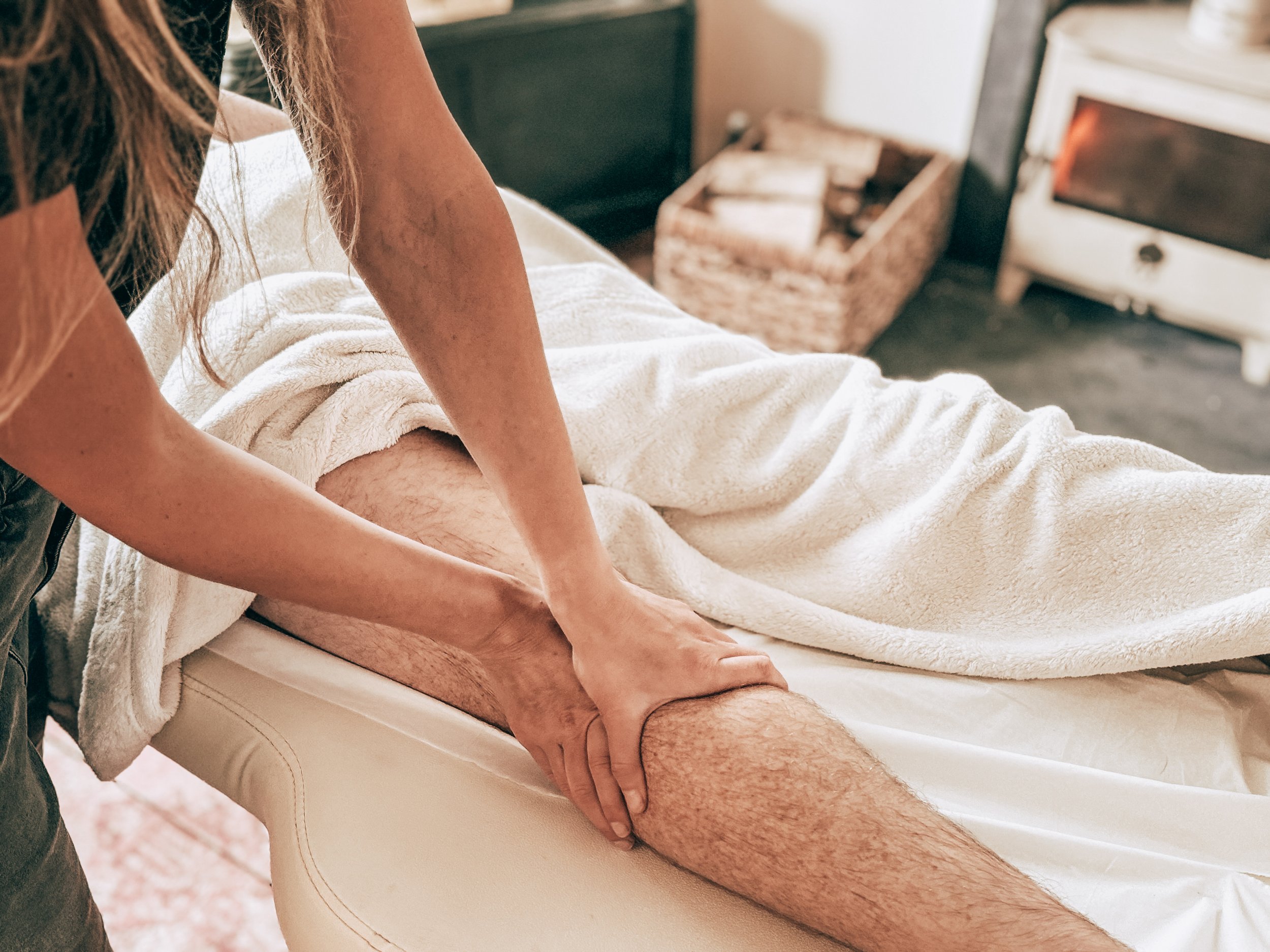
Whether you're dealing with chronic pain or a daily discomfort, treatment at Knead & Needle can help you work towards a pain-free life.
Treatments
-

Sports Massage
Sports massage is a type of massage therapy specifically designed to address the needs of athletes or active individuals. It focuses on the muscles and soft tissues that are commonly affected by physical activity, aiming to improve performance, prevent injury, and enhance recovery.
Key benefits of sports massage include:
Muscle relaxation – Helps reduce muscle tension and stiffness.
Injury prevention – Improves flexibility and promotes blood circulation, which can prevent injuries.
Pain relief – Alleviates soreness and discomfort from physical activity.
Recovery – Speeds up recovery after exercise or competition by removing waste products like lactic acid from muscles.
Improved range of motion – Helps maintain or improve joint flexibility and mobility.
-

Myofascial Cupping
Myofascial cupping is a therapeutic technique that combines traditional cupping therapy with a focus on the myofascial system, which includes the muscles and the fascia (the connective tissue that surrounds muscles). This method uses cups to create suction on the skin, which helps to lift the tissue and improve blood flow, oxygenation, and the release of tension in the fascia and muscles.
Key aspects of myofascial cupping include:
Suction Effect: Suction pulls the skin and underlying tissues into the cup, which helps to increase blood flow and release tightness in the muscles and fascia.
Relieves Muscle Tension: By targeting the fascia and muscles, myofascial cupping helps to alleviate muscle stiffness, reduce pain, and release trigger points (knots in muscles).
Improved Range of Motion: The treatment can help to improve flexibility and mobility, particularly after an injury or intense physical activity.
Increased Circulation: The suction effect encourages blood flow to the treated area, promoting healing and detoxification by flushing out metabolic waste products that may have built up in the muscles and fascia.
-

Dry Needling
Dry needling treats muscular pain and dysfunction. It involves inserting thin, solid needles (similar to acupuncture needles) into specific trigger points, or muscle knots, within the affected muscle.
Key aspects of dry needling include:
Targeting Trigger Points: The needles are inserted directly into the muscle's trigger points, which are tight bands of muscle fibers that cause localized pain or refer pain to other areas of the body.
Muscle Relaxation: Inserting the needle into these tight muscle areas can cause a "twitch response," which helps to release the muscle spasm and relax the muscle tissue.
Pain Relief and Healing: Dry needling helps to stimulate the nervous system, improve blood flow to the area, and promote the release of natural pain-relieving chemicals, like endorphins.
Improved Range of Motion: By reducing muscle tightness and pain, dry needling can help to restore normal movement and flexibility.
Not the Same as Acupuncture: Although dry needling uses similar needles to acupuncture, the techniques and philosophies are different. Acupuncture is based on traditional Chinese medicine and focuses on balancing energy (Qi) in the body, while dry needling is based on Western principles and targets specific musculoskeletal problems.
